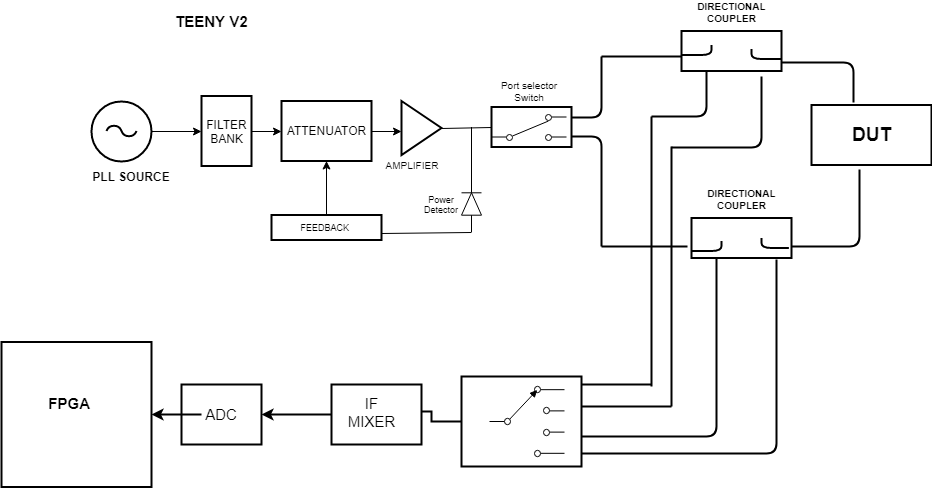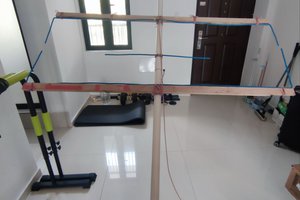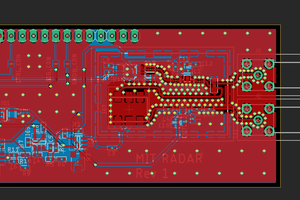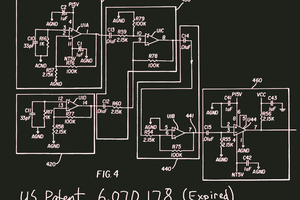RF seems to be a lot like black magic there are multitude of things that are taken in consideration while working with RF design especially above few hundred Megahertz . As a electronics engineer i love to tackle problems like this .This project came to me when i designed passive filter for a project i had no equipment to test the real world performance of the filter after searching few hours in internet i stumbled upon an arduino shield to measure network parameters and few other projects, Keeping all this in mind we started designing the first revision of network analyzer .
We choose STM32F103 mainly because it support full speed USB communication and its in-build ADC is better compared to ADC found in microcontrollers like avr and pic series another fact that narrowed down to STM32F103 is because popular ARM development board "BluePill" use this same microcontroller which is easily available in most electronics stores. When we talk about DDS Analog device is first manufacture that came to my mind they have a extensive line up of DDS, Searching through their website there was not much difficulty in choosing AD9851 it goes from 0 to 180MHz but presence of harmonics limit usable range is between 0 to 70 MHz . We had to design a filter in order to knockoff higher harmonics . AD provide an online simulator to simulate their DDS this came handy in designing DDS part of the circuit ! Many simulations are done using LT spice especially designing the 7 th order butterworth filter and amplifier. The signal from DUT is connected to power detector and output from detector connected to ADC . A custom software interface for TEENY is written in python.
In second revision of TEENY can measure both amplitude as well as phase making it a fully functional Vector Network Analyzer (VNA) .There are still some more testing that needed to done for our first revision .
GitHub : Click Here
Teeny v2 Design Thought Process
Teeny revision one was a scalar network analyzer teeny v2 will be a vector network analyzer this will be huge leap in engineering perspective. We are final year Engineering student from India, sourcing components is very difficult in India Digkey/Mouser offers services in India but the shipping rate is too steep for students like us this is one of the barriers that we are facing right now.

Teeny v2 Block Diagram
Teeny v2 will be entirely different from the first version in which we used DDS but the limitation of DDS is that as you increase frequency the price increase exponentially thus we are moving towards PLL based source they are relatively inexpensive compared to DDS and have good price to frequency ratio. Directional coupler is another key element of vector network analyzer a directional coupler that works from few kHz to 2 GHz is required it must be small and cheap (Mini circuit have selection of directional couplers that satisfy all this criteria)
Receiver section of the VNA consist a port selection switch coupled to IF and ADC this design lowers the cost as dedicated ADC for each port will increase Board space as well as overall cost of VNA. FPGA will be used for further processing (IQ modulation) .Lattice MachXO3 looks promising they are cheap small and development tools are open source.
" If we got the right opportunity in one or two years this project could be a Kickstarter campaign "
 glenpyeldho
glenpyeldho






 Jmzdd
Jmzdd

 Ever
Ever
 Tom Anderson
Tom Anderson
I work with Lattice MachXO3 all the time, it's a great platform for projects like this. I use the $20 FPGA starter kit (https://www.semiconductorstore.com/cart/pc/viewPrd.asp?idproduct=61568) and Lattice Diamond which is provided by Lattice for free. The $20 dev board has enough IO for about anything, and the Diamond IDE will compile a design in about 30 seconds while Xilinx Vivado takes about 4 minutes to do the same job.